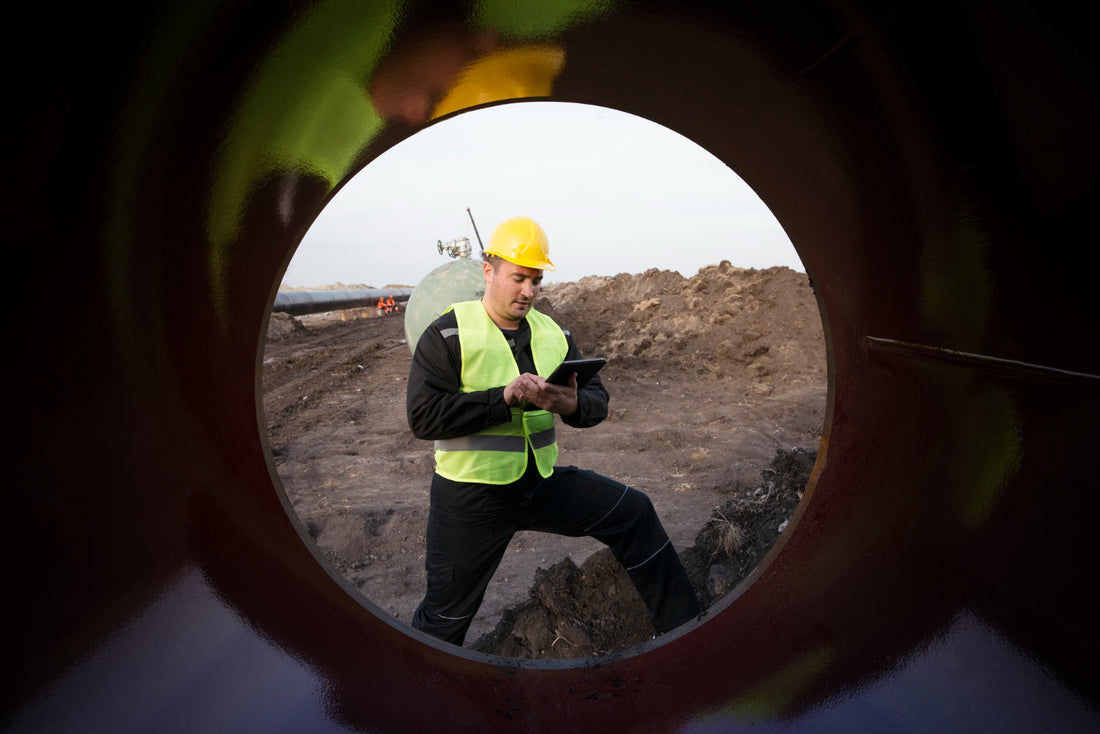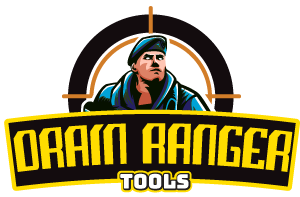
Common Issues Found During Sewer Inspections and How to Fix Them
Share
Sewers play a vital role in helping homes and their surrounding environments remain clean. They help carry waste and storm water away from homes, public and commercial buildings, to waste treatment plants or water bodies.
So, not carrying out regular sewer inspections can lead to unwanted mishaps. For instance, there are about 23,000 to 75,000 sewer overflows in the USA annually. This leads to health issues due to the accumulation of wastewater and degradation in the soil quality as well.
Hence, periodically inspecting sewers prevents such issues from happening. Apart from that, you also meet the regulations of bodies like the Environmental Protection Agency. These inspections are carried out by professional home inspectors or plumbers.
But which issues do they detect? Let’s learn more about them below.
Which Common Issues Are Found During Sewer Inspections?
The types of issues that plumbers or home inspectors normally detect when inspecting a sewer are:
1. Tree Root Intrusions
Tree root intrusions refer to the penetration of sewer lines by tree roots when searching for water and nutrients. Sewers are an ideal source of both these things.
That’s why these roots force their way through the cracks or holes in the pipes. You’ll find tree root intrusions in pipes made from cast iron or clay.
Impact: These roots block or restrict the flow of water and sewage, and cause even more cracks or holes. They can also cause a structural breakdown of the sewer system. That’s why plumbers and home inspection professionals use sewer inspection cameras to detect the early signs of intruding tree roots.
What Is The Solution To Tree Root Intrusions In Sewers?
After detecting these intrusions, plumbers contact other professionals to cut away the roots and remove them. Alternatively, they use Epsom, rock, or table salt to kill roots chemically. Another method is trenchless pipe lining.
Trenchless pipe lining involves using resin-coated liners that cure and harden inside the old pipe to form a new pipe. This method extends the lifespan of pipes by over five decades.
2. Cracked or Collapsed Pipes
Cracked or collapsed pipes refer to pipes that experience structural degradation or wear and tear over time. They crack or collapse due to soil movement or external machinery.
Soil movement refers to the displacement of soil due to tectonic plate activity or agriculture, or construction activity. External machinery refers to the usage of machines like excavators or drills near the sewer pipes.
Impact: The impact of collapsed or cracked pipes in sewers includes slow drains, sinkholes, and sewage backups. Plumbers can detect these issues during a sewer line inspection.
Slow drains refer to slow-moving water or waste that does not get removed fast enough. Sinkholes refer to cavities within the soil caused due to excessive flow of water from cracked pipes. This runoff of water leads to the destabilization of the soil and creates the cavities.
What Is The Solution To Collapsed or Cracked Pipes In Sewers?
Collapsed or cracked pipes in sewers can be fixed with the help of pipe relining, pipe bursting, or full replacement.
Pipe relining is also known as trenchless pipe lining.
Pipe bursting involves using a bursting tool to break the damaged pipe and pull the new pipe behind it. During this method, plumbers provide temporary sources of water to the surrounding homes.
A full replacement refers to a complete pipe replacement through excavation. It is more time-consuming and invasive, so much so that the plumbers need to wear PPE kits.
3. Blockages from Debris & Grease
Debris and grease blockages are one of the other common issues detected during sewer scope inspections. Sewer scope inspections refer to detailed inspections of the sewer lines with the help of sewer inspection cameras.
Debris refers to sand, silt, leaves, or vegetable clippings. Grease refers to oil or fats from products like sanitary napkins, paper towels, or bits and pieces of food.
We sometimes unconsciously flush these products down our washrooms without realizing. For instance, improper grease trap waste management led to 47% of pipeline blockage issues in the USA last year.
Impact: Debris and grease blockages block the flow of water through the sewer pipes and sewer backup. They also attract insects due to the organic matter in them. The presence of these insects can lead to diseases.
What Is The Solution To Debris and Grease Blockages In Sewers?
From sewer backups to unpleasant odor to sewer overflow, there are a lot of issues to be handled. Sewer backups refer to the soap water or shower water rising back up through the drains. Sewer overflows refer to the discharge of sewer water into the environment. These issues are commonly observed in residential & commercial properties.
Debris and grease blockage in sewers can be fixed by hydro-jetting, rodding, and preventive grease trap cleaning.
Hydro-jetting involves using pressure washing machines to forcibly push or remove these blockages. Rodding involves using a specialized rod to push blockages. These pipes can bend around the corners of long pipes. Preventive grease trap cleaning refers to using grease trap interceptor plumbing devices to stop grease-laden objects from entering drains. These traps need to be regularly maintained, or else they can lead to other problems.
4. Corrosion
Corrosion is one of the other issues that sewer systems face. This issue can be observed in older sewer systems, made from cast iron or steel.
Corrosion takes place due to improperly coated sewer pipes, harsh drain cleaners, and hydrogen sulphide gases. Plumbers or home inspectors study these issues by wearing PPE kits and entering the drains. These kits prevent the gases from coming into contact with their body.
Generally, most sewer pipes are coated with a protective material like epoxy or other polymer-based coatings. However, sometimes, the pipes aren’t entirely coated. Using harsh drain cleaners leads to the weakening of the inner lining of the sewer pipes.
Impact: Corrosion can lead to leaks, scaling, or rust. These leaks take place through the gaps in the protective coating of the sewer pipes. Scaling refers to the accumulation of dissolved salts and minerals within the sewer pipes.
Rust can be observed in cast iron pipes. Plumbers detect this with the help of sewer inspection cameras.
What Is The Solution To Corrosion In Sewers?
Pipe corrosion can be fixed through trenchless pipe replacements, upgrading to PVC pipes, and using better pipe coatings.
Upgrading to PVC pipes ensures the longevity and durability of your sewer systems.
5. Misaligned or Offset Joints
Misaligned or offset joints refer to sewer pipe joints whose ends aren’t properly joined or are separated.
Offset joints are caused in sewer pipe systems due to soil movement or poor installation of pipes. This is why hiring plumbers to install these systems is essential.
Impact: Offset joints in sewer pipes can lead to water infiltration or blockages. The improperly attached or separated joints can cause groundwater to seep in or wastewater to flow out.
The gaps within the sewer pipes also provide openings for tree roots to penetrate through the pipes. Some other problems are sinkholes or clogs, as debris and grease can get stuck in the joints.
What Is The Solution To Misaligned or Offset Joints In Sewers?
This issue can be fixed with the help of trenchless realignment or joint sealing. Joint sealing refers to using a pipe sealant material or specialized cutting tools to attach pipes. Trenchless alignment refers to trenchless pipe fixing with the help of resin-coated liners.
Trenchless methods are quite effective in treating these issues.
6. Infiltration Issues
Finally, we have infiltration. This refers to the influx of stormwater or groundwater into the sewer pipes.
Stormwater or groundwater can enter the sewer pipes through gaps in the pipe joints or the pipe openings.
Impact: The influx of stormwater or groundwater can lead to sewage backups.
What Is The Solution To Infiltration and Inflow In Sewers?
Infiltration and inflow in sewers can be fixed by sealing cracks, replacing manhole covers, and upgrading the existing pipes.
Now that we have discussed it in detail, here’s an overview. If you want to understand the causes and methods again for an easier recall, take a look at the table for better understanding:
|
Issue |
Cause |
Impact |
How to Fix |
Urgency to fix the issue |
|
Tree Root Intrusions |
Roots seeking water infiltrate cracked joints or small pipe openings |
Blocked water flow, debris, and further breakdown of pipes |
Root cutting, chemical root treatment, trenchless pipe lining |
Immediate |
|
Cracked or Collapsed Pipes |
Soil movement, aging infrastructure, heavy vehicle loads |
Sinkholes, drains, and sewage backups. |
Pipe relining, pipe bursting, or full replacement |
On an emergency basis |
|
Blockages from Debris & Grease |
Grease buildup, wipes, foreign objects, or construction debris |
Reduction in water flow, growth of insects leading to disease |
Hydro-jetting, mechanical rodding, and regular grease trap cleaning |
Urgent in case of severe blockage |
|
Corrosion & Material Deterioration |
Old clay, cast iron, or concrete pipes corrode over time |
Breakdown of sewer pipe system; Leaks, scaling, and rust |
Pipe coating, trenchless relining, and upgrading to PVC |
Immediate if leaking |
|
Misaligned or Offset Joints |
Ground shifting, poor initial installation |
Water infiltration or blockages |
Trenchless realignment, sealing joints |
Urgent if leaks are found |
|
Infiltration & Inflow |
Stormwater or groundwater seeping into sewer lines |
Sewage backups |
Sealing cracks, replacing damaged manhole covers, and upgrading sewer infrastructure |
Immediately |
Table 1: Sewer Issues at a Glance: Causes & Fixes
How to Prevent Sewer Issues Before They Worsen?
You can prevent sewer issues before they worsen by getting a sewer inspection done by professional plumbers.
|
Measure |
Impact/Reason |
|
Regular sewer line inspections |
Early incidence of these issues can be detected |
|
Installing root barriers near trees |
Prevents tree root infusions |
|
Proper waste disposal |
Ensures no waste, like grease, for example, builds up in sewer pipes |
|
Installing grease traps |
Prevents grease from entering sewer pipes |
|
Regular maintenance schedules |
Prevents issues detected during inspections from worsening |
Table 2: How To Prevent Sewer Line Issues
Wrapping Up
Periodic sewer inspections reveal hidden issues like roots, cracks, blockages, corrosion, and infiltration. These inspections help you save money by preventing costly repairs later on. They also protect the health of the people and the environment around them.
Do You Have A Sewer Issue?
In case you’ve been noticing any of the signs of sewer line problems, get in touch with us and schedule a professional sewer line inspection today to prevent costly repairs.
